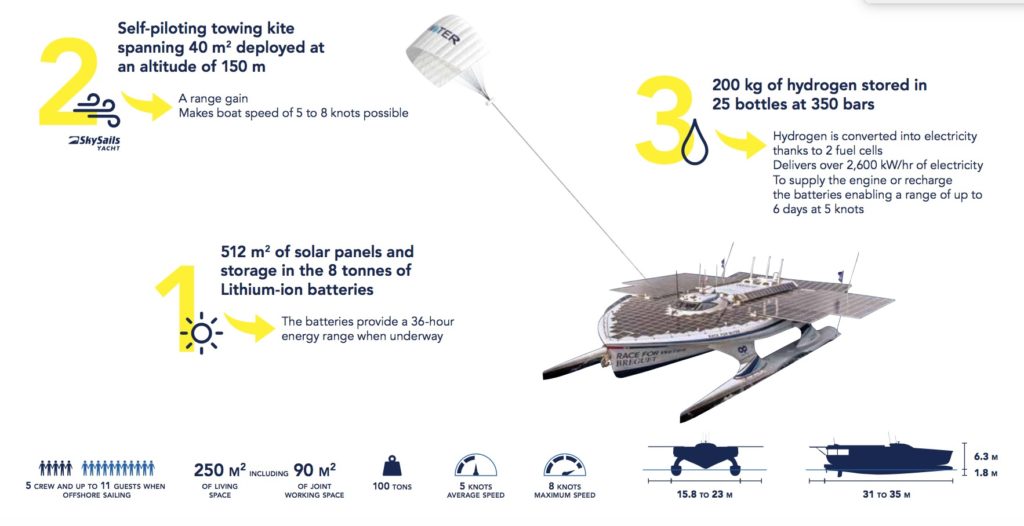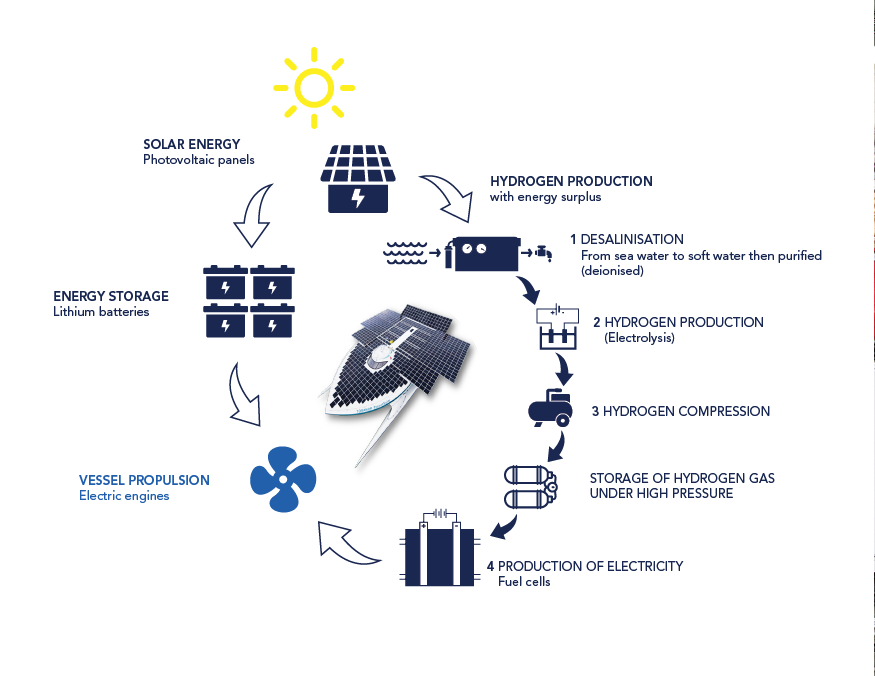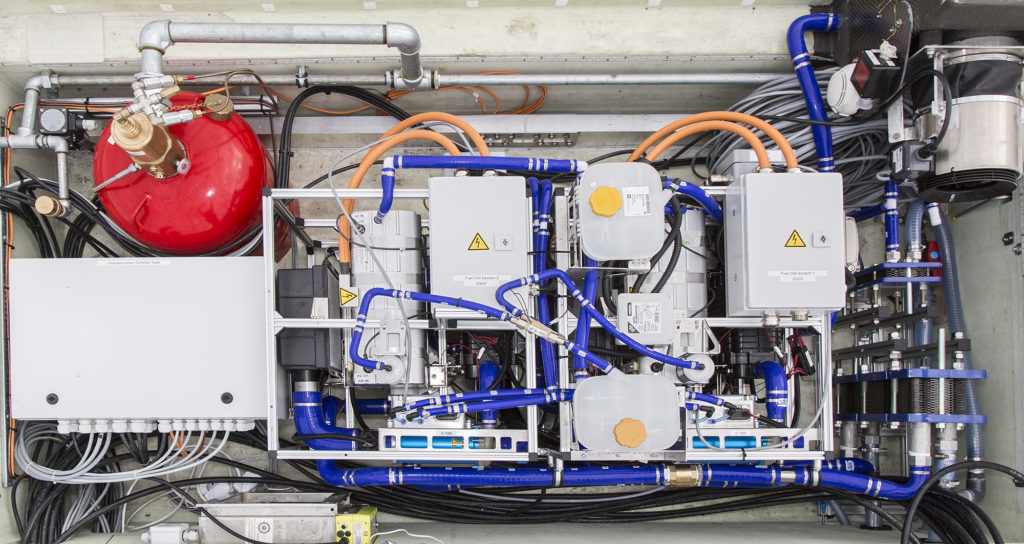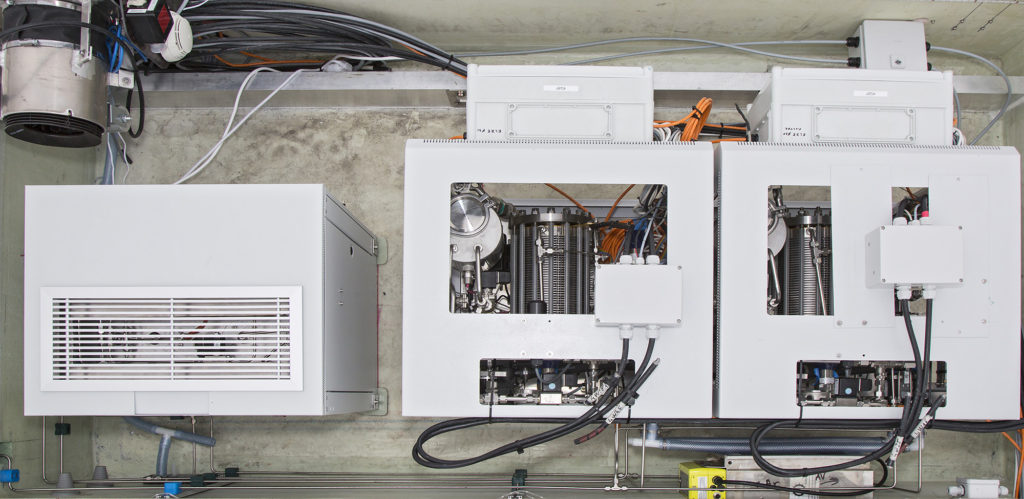The H2 solution

Hydrogen is an energy vector, which can be produced from intermittent sources of renewable energy. Hydrogen can then be converted into electricity through a fuel cell.
- A gas with very high energy density. There are numerous applications for hydrogen technologies, as much in the sector of mobility for electric vehicles, lorries, boats and even planes, as for stationary applications as a replacement for diesel generators.
- An efficient solution for energy storage. Hydrogen is the most appropriate technology for seasonal mass storage. In contrast to batteries, it doesn’t run down with the passage of time. Hydrogen is most frequently stored in tanks at medium or high pressure.
- A solution for sharing energy. Hydrogen can absorb the surplus energy produced by renewable sources and be reused for operations like regulating the network or be transported to provide mobility. The conversion of hydrogen into electricity via a fuel cell only produces steam and heat. No greenhouse gases are involved and there are no toxic fumes.
How hydrogen is used aboard and its fuel cell.
“The hydrogen chain designed for the Race for Water vessel aims to demonstrate that today’s hydrogen technologies are mature, reliable and sustainable, both at sea and on land”
An on-board system for hydrogen production
During the day, when the Race for Water boat is underway, solar energy is produced and it is used to get the boat making headway and recharge the batteries. At night, the latter will supply the necessary energy to sustain life on-board and power the boat. When the boat is docked, the surplus solar energy is used to produce hydrogen, which is stored in high-pressure tanks for later use.
First of all, the seawater is pumped, desalinated and then stored aboard. This fresh water is then purified before being electrolysed by using the surplus photovoltaic energy available.
The electrolysers produce hydrogen at pressures up to 50 bars. The hydrogen is initially purified (dried) then compressed at 350 bars and stored in specially designed tanks. In this way, nearly 200kg of hydrogen can be stored aboard, which represents a range of 6 to 7 extra days.
The hydrogen will then be converted back into electricity via two 30kW fuel cells. These fuel cells maintain the level of charge in the batteries or can be used to run the electric engines if need be.

- An energy source on demand. If need be, hydrogen can be converted into electricity via the fuel cell system in order to supply the necessary energy. This demonstrates that a boat can operate using clean energies and that energy transition in the marine sector is a reality.
- Self-sufficiency in terms of energy at sea. Aboard the boat, 25 bottles of hydrogen are stored at a pressure of 350 bars. Nearly 200kg of hydrogen can be converted into nearly 2,600kWh of electricity. This represents four times the amount of electricity stored in the boat’s batteries (745kWh). Thanks to the hydrogen system, the vessel has six extra days with which to make headway at a speed of five knots without sunshine.
- A commercially-viable technology. The hydrogen solution used by Race for Water is based solely on existing technologies in partnership with various companies.
- 2 PEM pile à combustible de 30 kW chacune (vue latérale)
- Pile à combustible de 30 kW chacune (vue de dessus)
- 2 électrolyseurs de 5.5 kW chacun produisant environ 4kg d’hydrogène par jour. À gauche le sécheur H2


